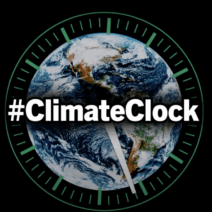In the grand tapestry of Earth’s climatic history, a persistent question occupies the minds of scientists, policymakers, and concerned citizens alike: What’s really causing climate change? To grapple with this inquiry, one must delve into the complex interplay of natural phenomena and anthropogenic influences, much like an artist carefully selecting colors and strokes to create a masterpiece. Both natural and human factors wield substantial power, vying for dominance over the planet’s climate system. As we navigate this intricate landscape, we must illuminate the mechanisms at play, revealing an understanding that transcends the superficial and invites deeper contemplation.
The Earth’s climate is a dynamic entity, subject to variations over epochs. Natural factors that influence climate change can be likened to the Earth’s heartbeat, each pulse signaling a shift. One compelling example is volcanic activity. When volcanoes erupt, they release massive amounts of ash and sulphur dioxide, which can lead to temporary cooling by reflecting sunlight away from the planet. Such natural events illustrate that the planet has, at times, been both a benefactor and a tormentor, assisting and hindering the climatic equilibrium.
Another primal force is the Earth’s orbital variations, known scientifically as Milankovitch cycles. These cycles encompass the eccentricity, axial tilt, and precession of our planet’s orbit around the sun, subtly altering solar radiation distribution across the globe. These shifts can instigate glacial and interglacial periods, echoing through time and exemplifying nature’s mesmerizing cadence. Imagine a grand symphony, where each movement ebbs and flows, shaping the melodic contour of Earth’s climate over millennia.
Beyond these natural variations, we must also confront the undeniable evidence of human impact. The acceleration of climate change observed over the past century is a phenomenon largely attributed to anthropogenic factors. Chief among these is the burning of fossil fuels, a practice that has transformed energy usage worldwide. This combustion releases carbon dioxide (CO2) and other greenhouse gases (GHGs) into the atmosphere, creating a blanket that traps heat and alters the delicate temperature balance that has sustained life as we know it.
The advent of industrialization marked a turning point in human history, akin to a seismic shift in the Earth’s crust. As factories billowed smoke skyward and vehicles churned fossil fuels, humanity inadvertently unleashed a torrent of greenhouse gases into the atmosphere. This transformation catalyzed a profound change, not just in the air we breathe, but in the very fabric of climate itself. The correlation between industrial activity and rising atmospheric CO2 levels is alarmingly clear, painting a vivid portrait of humanity’s role in climate change.
Deforestation, often overshadowed by the fossil fuel narrative, also plays a crucial role in climate dynamics. Forests act as carbon sinks, absorbing CO2 and mitigating its effects. When trees are felled, not only is this natural carbon capture undermined, but the act of burning or decaying wood releases stored carbon back into the atmosphere. Thus, the loss of forests transforms these vital ecosystems into significant contributors to greenhouse gas concentrations, compounding the challenges we face in combatting climate change.
Furthermore, agriculture and livestock production present additional human-induced factors accelerating climate change. Methane, a more potent GHG than CO2, is released during enteric fermentation in ruminant animals, such as cattle. As global demand for meat and dairy continues to rise, the increased livestock population further exacerbates methane emissions. The intersection of dietary choices and climate impact reveals that individual actions resonate on a global scale, emphasizing the need for a collective reevaluation of consumption patterns.
The symbiotic relationship between natural systems and human interventions creates a convoluted narrative of climate change. To consider one without the other is to gaze at a painting and neglect the strokes that brought it to life. For instance, while the current climate crisis is predominantly anthropogenic, it is also influenced by natural variability and phenomena. Climate models, which serve as navigational tools for scientists, must incorporate both elements to render accurate projections and inform policy decisions.
To understand climate change fully, one must also grasp the concept of feedback loops. These loops play a significant role in amplifying the effects of warming. For example, as temperatures rise, polar ice melts, decreasing the Earth’s albedo—the ability of surfaces to reflect sunlight. Darker ocean waters absorb more heat, leading to further warming and more ice melt. This vicious cycle demonstrates how natural processes can be exacerbated by human actions, creating a precarious balance that is difficult to reverse.
Addressing climate change necessitates a multifaceted approach, acknowledging both natural and anthropogenic factors. The reliance on renewable energy sources is paramount, serving as a counterbalance to fossil fuel consumption. By harnessing wind, solar, and hydroelectric power, humanity can forge a path toward a sustainable future, mitigating emissions and fostering an environmental renaissance. Reforestation and sustainable agricultural practices also present viable solutions that can harmonize human activity with natural processes, demonstrating that stewardship of the Earth is both possible and imperative.
In conclusion, the question of what is really causing climate change cannot be distilled into a singular narrative. It is a complex saga, woven from the threads of natural forces and human actions, each exerting its influence over the other. The reality is that both aspects must be recognized and addressed as we endeavor to confront the climate crisis. As caretakers of the planet, we hold the palette with which to paint a brighter future—a future that honors the integrity of natural processes while embracing innovation in human enterprise. The dialogue surrounding climate change must continue, bridging gaps between understanding and action, until we collectively reach a consensus that prioritizes the health of our planet for generations to come.


